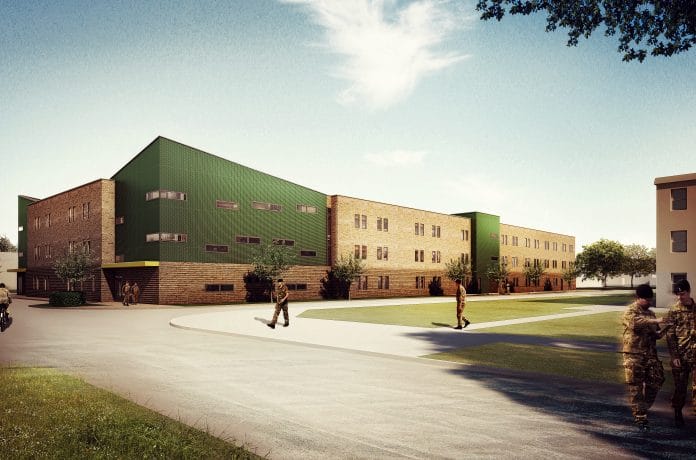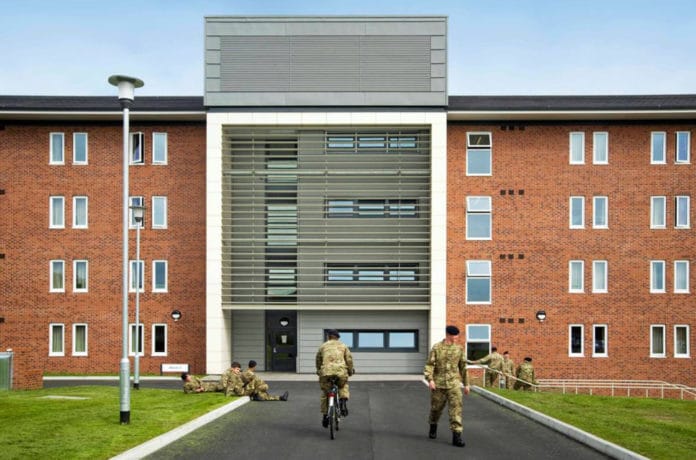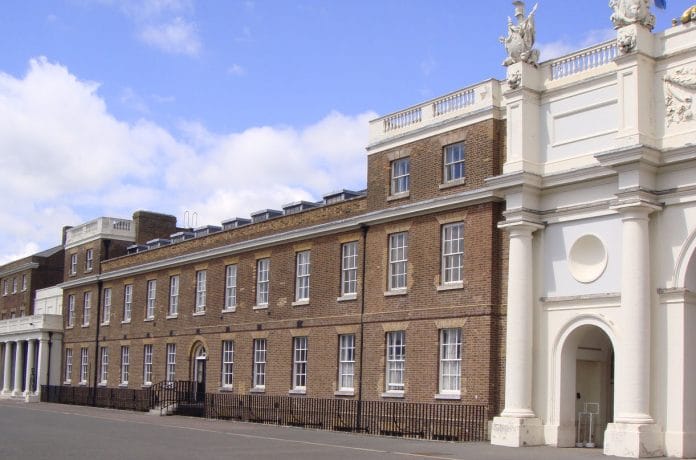
Continuing our ‘In the Spotlight’ series, this month Architect George Morley from our Cardiff studio tells us how his role as a Design Studio Leader at Cardiff University contrasts with the projects he’s working on.
“The ability to holistically analyse and respect merits of the ‘old’, while applying modernised elements of the ‘new’, is something that we need to see even more of.”
In our profession, it is with growing regularity that we must make decisions on whether to begin new or rejuvenate the existing. This does not only apply to building structures, but also the methodology with which we approach design.
Since joining HLM in 2019, I’ve primarily worked on projects in the Defence Sector – specifically, Single Living Accommodation (SLA) for the Armed Forces. HLM were appointed by Arcadis on the ECAM Framework as accommodation specialists to deliver a new generation of living quarters for the Armed Forces. Fundamental to the army experience, the existing accommodation needed updating, allowing for increased comfort, better maintenance, and improved energy efficiency, therefore benefitting both users and the Ministry of Defence (MoD) itself.
Designing the SLA required us to undertake a wholescale review of existing design standards, which led us to develop a revised set of standards for what SLA can achieve from a design point of view. The resultant accommodation we have developed looks to use high-quality architectural design to address the significant issues affecting the Armed Forces with regards to recruitment and retention of personnel, maintenance costs and energy use.
In this instance, having considered all the requirements for the accommodation, the task of achieving this has been achieved through the design of new facilities. In contrast to this, when tutoring first year students at Cardiff University, I find the adoption of ‘new’ technology to sometimes dilute the creative process which underpins Architectural design.
With the advent of Covid, students have become more accustomed to learning over Zoom and Teams, and this wholly digital way of learning has meant that new architecture students need to be reminded of the benefits of more analogue means of designing. The relative simplicity of pencil and paper can be a far more convincing means for students to convey their ideas compared to the use of a computer. I want to encourage students to go back to basics, to help them appreciate the simplicity of a pen and paper as their design tools, and instil in them a confidence that they don’t need to rely on technology, but use it instead to enhance their design work as it progresses.
Overall, we are seeing increasing numbers of projects that combine elements of existing buildings with new additions, contrasting and complimenting each. There is still, however, a reticence from some in the industry to adopt retrofit, preferring the shiny, new approach to design – much like the adoption of technology for the drawing process. The ability to holistically analyse and respect merits of the ‘old’, while applying modernised elements of the ‘new’, is something that we need to see even more of.
What remains prominent is that every circumstance is unique, from the creation of new facilities to the design process itself – we must recognise and celebrate the individuality, heritage and context of every project and process.




